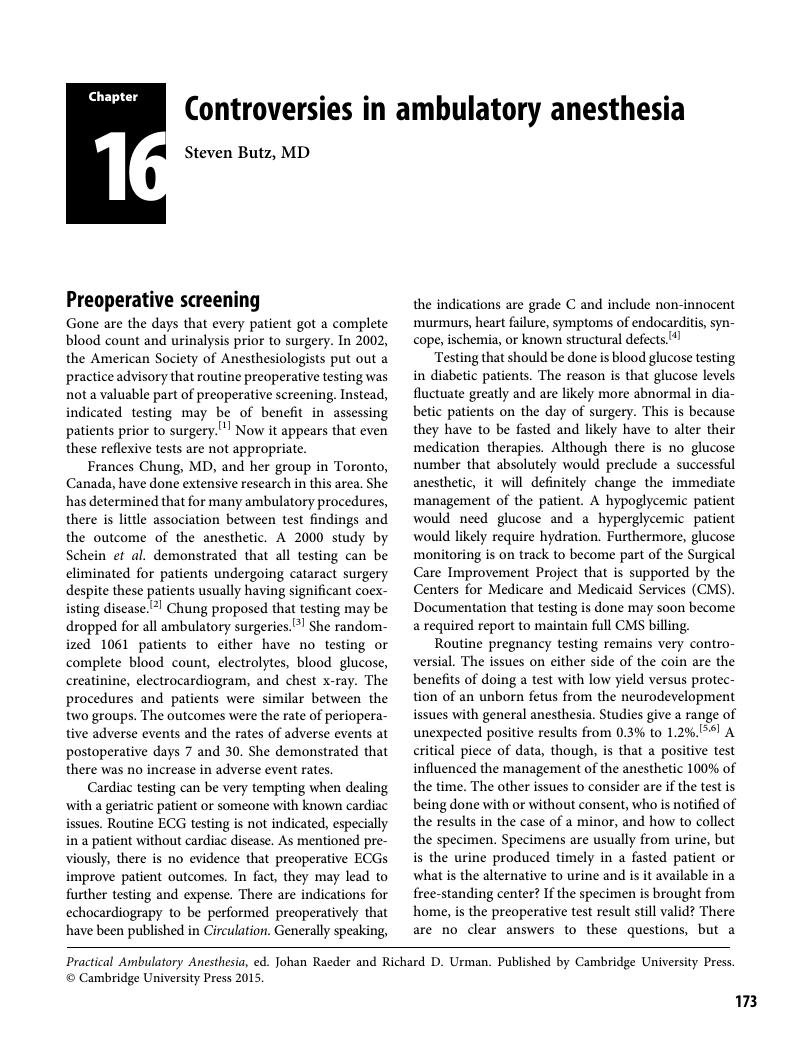Book contents
- Practical Ambulatory Anesthesia
- Practical Ambulatory Anesthesia
- Copyright page
- Contents
- Contributors
- Preface
- Chapter 1 Introduction to ambulatory surgery and anesthesia
- Chapter 2 Organization of ambulatory surgery and anesthesia
- Chapter 3 Patient and procedure selection
- Chapter 4 Pharmacology
- Chapter 5 Anesthetic techniques
- Chapter 6 Regional anesthesia for ambulatory surgery
- Chapter 7 Multimodal management of pain and postoperative nausea and vomiting (PONV) in ambulatory surgery
- Chapter 8 Practical recipes from start (preop) to finish (post-discharge)
- Chapter 9 Postoperative care
- Chapter 10 Anesthetic techniques for subspecialty surgery
- Chapter 11 Pediatric anesthesia
- Chapter 12 Aesthetic surgery
- Chapter 13 Anesthesia for gastrointestinal endoscopy
- Chapter 14 Management of emergencies in ambulatory setting
- Chapter 15 Office-based anesthesia
- Chapter 16 Controversies in ambulatory anesthesia
- Chapter 17 Current and future trends in ambulatory anesthesia
- Index
- References
Chapter 16 - Controversies in ambulatory anesthesia
Published online by Cambridge University Press: 05 August 2015
- Practical Ambulatory Anesthesia
- Practical Ambulatory Anesthesia
- Copyright page
- Contents
- Contributors
- Preface
- Chapter 1 Introduction to ambulatory surgery and anesthesia
- Chapter 2 Organization of ambulatory surgery and anesthesia
- Chapter 3 Patient and procedure selection
- Chapter 4 Pharmacology
- Chapter 5 Anesthetic techniques
- Chapter 6 Regional anesthesia for ambulatory surgery
- Chapter 7 Multimodal management of pain and postoperative nausea and vomiting (PONV) in ambulatory surgery
- Chapter 8 Practical recipes from start (preop) to finish (post-discharge)
- Chapter 9 Postoperative care
- Chapter 10 Anesthetic techniques for subspecialty surgery
- Chapter 11 Pediatric anesthesia
- Chapter 12 Aesthetic surgery
- Chapter 13 Anesthesia for gastrointestinal endoscopy
- Chapter 14 Management of emergencies in ambulatory setting
- Chapter 15 Office-based anesthesia
- Chapter 16 Controversies in ambulatory anesthesia
- Chapter 17 Current and future trends in ambulatory anesthesia
- Index
- References
Summary

- Type
- Chapter
- Information
- Practical Ambulatory Anesthesia , pp. 173 - 183Publisher: Cambridge University PressPrint publication year: 2015



